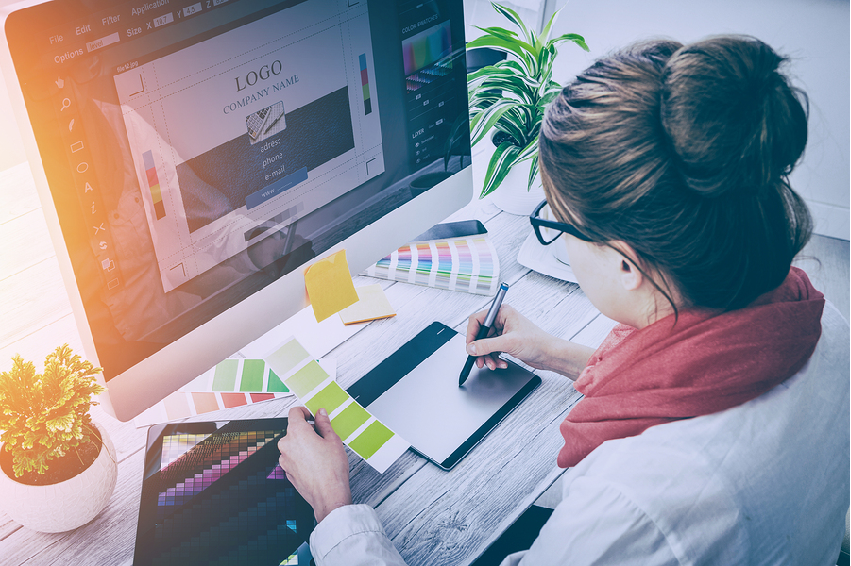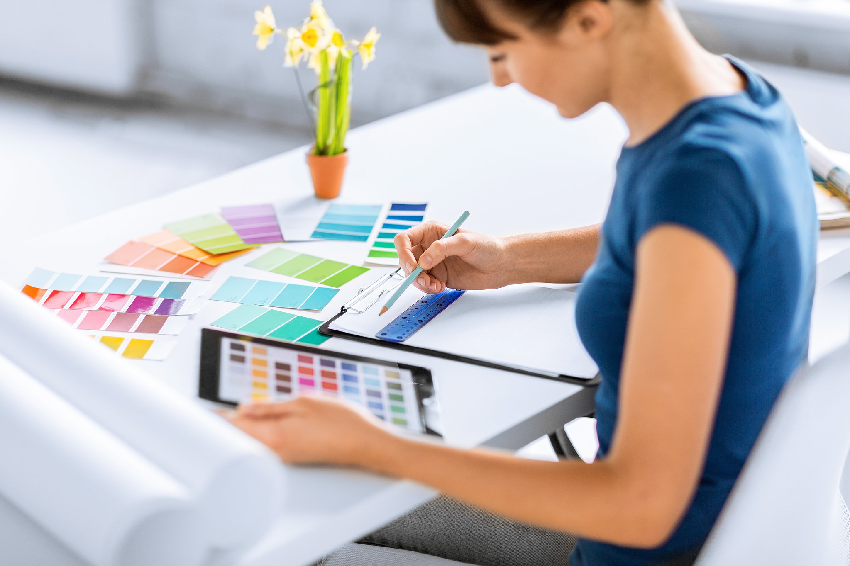
07 Mar Epic graphic design tips for non-designers
Regardless of what you do; producing graphic for networks or designing an invitation for an event, the use of graphic design, in addition to being broad and versatile, has aspects that make it complex, from the combination and size of fonts to alignment and white space. In this sense, these tips can help you go through the ups and downs of the creative design process.
For The Love Of Fonts, Put A Limit On Your Typefaces

When you’re at the stage of selecting a typeface or font for titles, subtitles, and the rest of the body text, use fonts that are legible to produce a graphic design that is simple and effective. Eyes typically have a hard time processing multiple typefaces, so using a small set of fonts is recommended, like this example that uses variants of the Aileron family, a geometric sans serif typeface with a clean, modern aesthetic.
Don’t Let Size Scare You
Enlarge the size of the text, figures, or other elements of the design and use colors to enhance this technique. Specifically on text, make sure the typeface looks good when scaled up, as here the Raleway font for the word ‘Scale’ is eye-catching and makes an impact with clear shapes.
Respect The Space Of Other Elements
Use kerning to fill in dead space, align text, or condense words that take up a lot of space. However, try not to reduce the kerning too much so that the text cannot be read, nor increase it too much, as the letters will look too far apart from each other. In this example, reducing the kerning in the word ‘Respect’ gives the layout a condensed effect, as if it were a visual representation of space or lack thereof.
Be Smart With Your Colors
Choose a color scheme that has 1-3 primary colors and do the same for secondary colors that contrast and complement each other. By adjusting the brightness to create contrast, you can be consistent by using different intensities of the same color. If the background has a very vivid color, the thinner typefaces will have to be more emphasized. In the example above, the bright aqua color is toned down with a forest green background to make the design clear and readable.
Clear, Clean, And Crisp
Crank up the contrast by adjusting the brightness of the image so that it dims the color of the text, making the layout clear and easy to read. This is a great way to apply the black or white text to an image to produce a bold ‘silhouette’ effect.
Fonts Have Feelings Too
Choose a font that expresses the meaning of your content. Typefaces with rounded edges are usually more attractive (like Quicksand here), geometric ones with strong edges (sans serifs) are solid and strong, and finally, those with serifs convey a sophisticated and elegant look.
Create Order With Alignment
Use a line or embellishment to balance the design. Here, a line to the left simulates a margin and anchors the text block.
Keep It Simple
Keep the design simple, without forgetting the basics. Make sure each element has a reason for being in the design and limit the number of fonts, colors, shapes, and frames to as few as possible. Use color combinations that contrast with the text to make it look sharp and easy to read. On the other hand, a uniform frame to contain the text will improve the compositional structure of the design.
Magic With Multipage
The easiest way to achieve a consistent look in a document or presentation is to duplicate the pages, then edit the text and replace the images in it.
Creativity And Originality
Take your creative skills to the max to produce the original graphic. Be inventive in choosing and combining different filters and fonts. Avoid trends and create designs that reflect your unique style, thus leaving a personal mark on your work.
Use Hierarchy To Order Your Content
The most dominant visual feature in a design should always be the most important part of the message. Color or enlarge a chart to see how the hierarchy of elements changes and see what your eye catches first.
Play With Symmetry
Use horizontal and vertical lines to match other design elements. To achieve balance and proportion, look for the thickness of the elements to match the weight of the fonts.
Relax From Time To Time
Creativity is like a battery, so you have to recharge it by taking breaks every so often. Relaxing is good for stimulating energy and productivity, that is, a walk, eating something, or sitting in the park helps you revitalize your mind.
You may also be interested in 10 VIDEO EDITING APPS FOR ALL PLATFORMS


No Comments